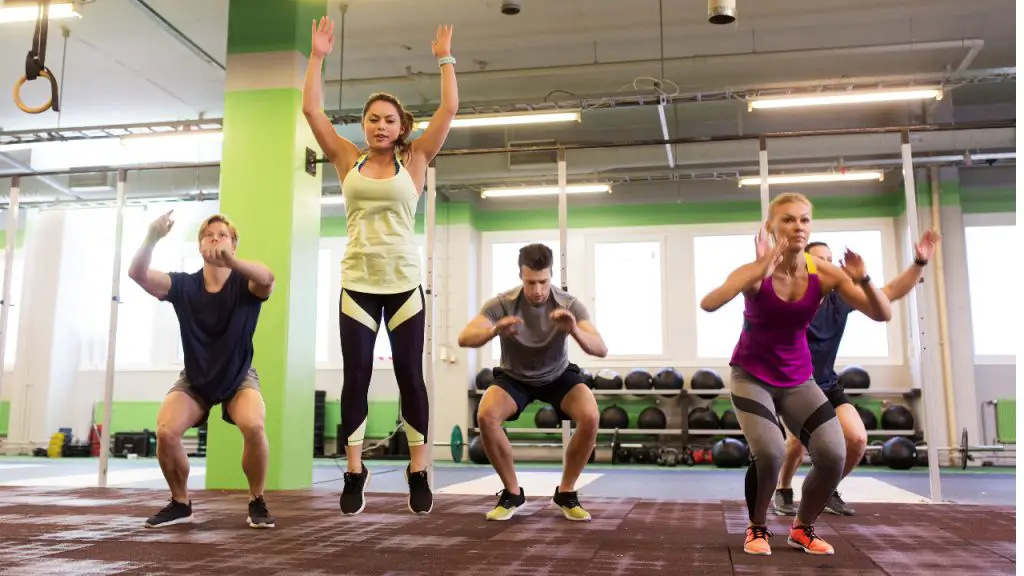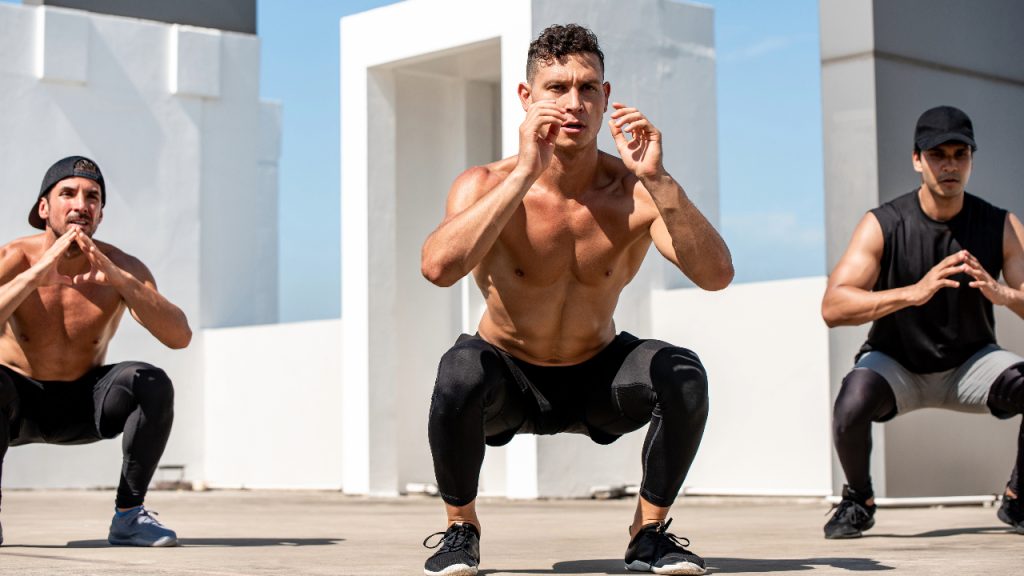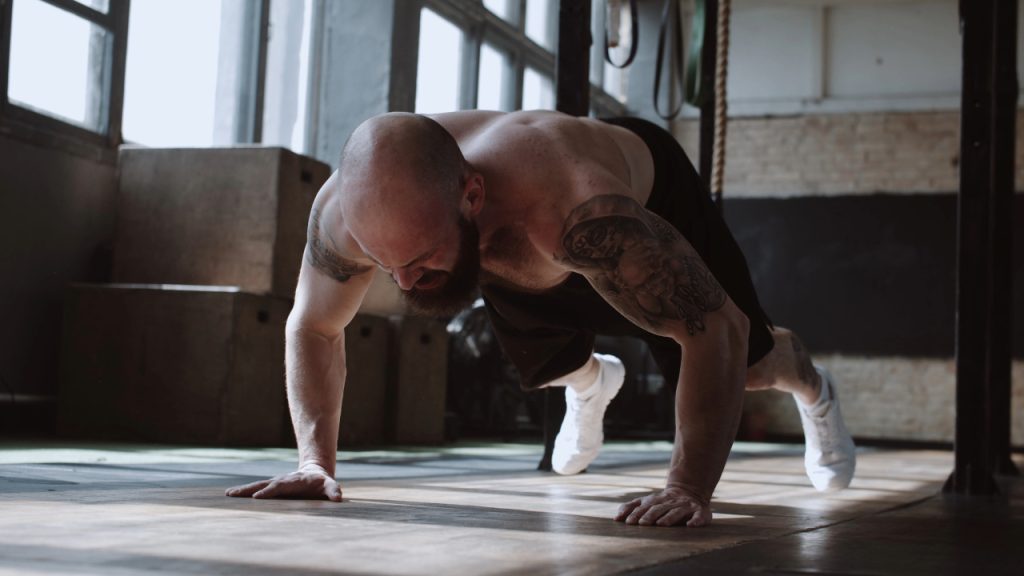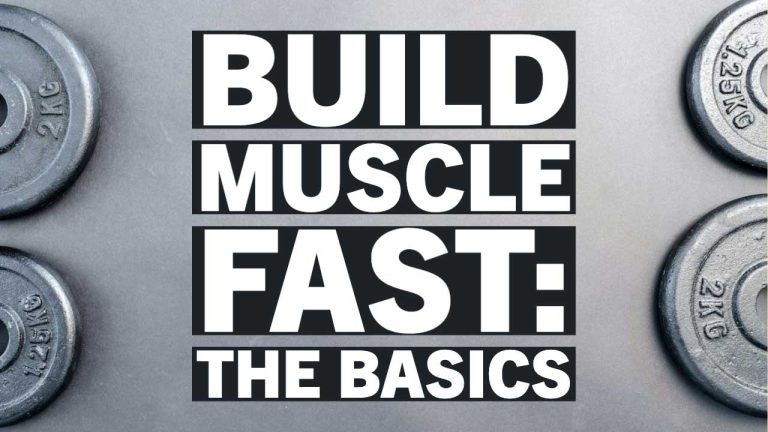What is Tabata Workout: A Quick Guide to High-Intensity Training

ListedFit is reader-supported. When you buy through links on our site, we may earn a small commission.
Tabata workout is a highly effective form of high-intensity interval training (HIIT) that can help you improve your fitness and reach your health goals.
Developed by Japanese scientist Dr. Izumi Tabata, this method focuses on short, intense exercise periods to maximize oxygen efficiency and boost overall performance.
In just four minutes, a Tabata workout can provide benefits typically associated with longer workouts, making it an attractive option for those with busy schedules or a desire for efficiency.
The origins of the Tabata workout come from the research conducted by Dr. Tabata and his team at the National Institute of Fitness and Sports in Tokyo.
They found that athletes who performed these short, intense workouts experienced significant improvements in both their anaerobic and aerobic systems.
This groundbreaking discovery led to the creation of the Tabata protocol, which has gained popularity among fitness enthusiasts and trainers alike.

Quick Summary
Though it shares similarities with other HIIT workouts, Tabata distinguishes itself through its specific structure, intensity, and duration.
The workout consists of 20 seconds of maximum effort followed by 10 seconds of rest, which is repeated eight times for a total of four minutes.
The exercises chosen for a Tabata workout can vary, but the key is to push yourself to your limits, making the workout challenging but incredibly effective in a short period of time.
Key Takeaways
- Tabata workouts are intense, 4-minute HIIT routines designed to improve oxygen efficiency and overall fitness.
- Developed by Dr. Izumi Tabata, this method is backed by research and has gained widespread popularity.
- The workout consists of 20 seconds of maximum effort, and 10 seconds of rest, repeated eight times for a focused, challenging exercise experience.
Table of Contents
The Origin of Tabata Workout
You might be curious about the origin of the Tabata workout, so let’s dive into its history. Tabata training was developed by Dr. Izumi Tabata, a professor at the Faculty of Sport and Health Science at Ritsumeikan University in Japan.
The workout’s foundation came from Dr. Tabata’s collaboration with the head coach of the Japanese Olympic speed skating team.
Their goal was to find the most effective way to improve the athletes’ performance using short bursts of high-intensity exercise. Through their research, they discovered that training with 20-second intense exercise intervals followed by 10-second rest periods proved to be extremely beneficial. Thus, the Tabata workout was born!
The workout routine gained popularity not only among athletes but also in the fitness community as a whole, thanks to its efficiency and the myriad of health benefits it offers. So, if you’re looking to give your workout regimen a boost, why not give the Tabata workout a try? Dr. Izumi Tabata and the Japanese Olympic speed skating team can attest to its effectiveness.
Is Tabata HIIT?
What is the difference between Tabata and HIIT?
Tabata and HIIT might seem quite similar, but there are some key differences between them. Both involve short bursts of intense exercise followed by periods of rest, but the structure and intensity of these workouts do vary.
Tabata is actually a specific type of HIIT workout. Developed by Dr. Izumi Tabata, this workout involves alternating between 20 seconds of maximum-effort work and 10 seconds of rest, repeated for a total of 4 minutes. Its key feature is the intensity: you’ll aim to push yourself to your limits and achieve peak anaerobic performance during those 20 seconds of exercise.
HIIT, on the other hand, offers more flexibility in terms of intensity, duration, and exercise selection. While still focused on high-intensity intervals, your HIIT workout might last anywhere from 20 to 60 minutes, with intervals and rest periods varying by preference or fitness level.
In terms of exercise options, Tabata typically involves bodyweight exercises like burpees, squats, or mountain climbers. By contrast, HIIT workouts can incorporate a wide range of exercises, from sprints and plyometrics to kettlebell swings and jump rope.
Ultimately, both Tabata and HIIT can provide you with an effective, time-efficient workout, but the key difference lies in the intensity and structure. So if you’re looking to maximise your fitness results in a shorter time frame, Tabata might be the way to go.
On the other hand, if you prefer more variety and flexibility in your workouts, HIIT could be the better choice for you.
A Typical Tabata Workout Structure

Before diving into the Tabata workout, it’s essential to warm up. Spend about 5 to 10 minutes warming up your muscles with some light stretches and aerobic exercises like jogging or jumping jacks. This way, you’ll be properly prepared for the high-intensity workout ahead.
Once you’re warmed up, it’s time to pick an exercise for your Tabata workout. Choose a simple, comfortably familiar exercise that you can perform with the correct form at your current fitness level. Some popular options include push-ups, squats, burpees, or sprinting.
The core of a Tabata workout is its work-to-rest ratio. You’ll perform the chosen exercise at maximum effort for 20 seconds, followed by a brief 10-second recovery period. This 20-seconds-on, 10-seconds-off pattern is repeated eight times, resulting in a total workout time of just four minutes.
Remember to push yourself and give it your all during those 20-second intervals. The intensity of your effort is crucial for reaping the full benefits of a Tabata workout. However, be mindful of your own limits and avoid pushing yourself to a point of injury or excessive discomfort.
After completing your eight rounds of exercise and recovery, take some time to cool down and stretch. Spend about 5 to 10 minutes engaging in gentle stretches and slower-paced movements, allowing your heart rate and breathing to return to normal.
In summary, a Tabata workout structure consists of:
- Warm-up (5 to 10 minutes)
- Chosen exercise
- 20-second high-intensity intervals
- 10-second recovery periods
- Eight rounds of work-to-rest ratio
- Cool down/stretch (5 to 10 minutes)
With this structure, your Tabata workouts can be both effective and efficient, which will help you improve your fitness and make the most of your exercise time.
How Effective Is Tabata for Weight Loss?
When it comes to weight loss, you might be wondering if Tabata is an effective option. Well, Tabata is a high-intensity interval training (HIIT) workout, and it’s designed to help you burn calories and improve your overall fitness. So, it’s definitely worth considering in your weight loss journey.
You see, Tabata involves intense 20-second exercise bursts followed by 10-second rest periods, and this is repeated for eight rounds, making it a four-minute workout. The beauty of it is that it pushes your body to its maximum capacity, meaning that you’ll be burning a significant number of calories during the workout.
Tabata has the potential to be an effective method for weight loss due to its high intensity, calorie burning, and afterburn effect.
But you have to stay consistent, combine it with other forms of exercise, and maintain a healthy diet to reach your desired results.
But Tabata doesn’t just help with burning calories during the workout itself. The high intensity of the exercises also creates an “afterburn” effect, scientifically known as excess post-exercise oxygen consumption (EPOC). This effect keeps your metabolism elevated for hours after the workout, allowing your body to burn even more calories. So, in a way, you’re still burning calories even when you’re not working out.
Now, the key to losing weight with Tabata is consistency and making sure you incorporate it into a balanced workout routine. You can’t expect to see significant weight loss just by doing Tabata a few times. It’s best to include it in your fitness plan alongside other exercises, like strength training and lower-intensity cardio, to get the best results. And, of course, maintaining a healthy diet will also play a crucial role in helping you achieve your weight loss goals.
How Long Is a Tabata Workout?
A Tabata workout is relatively short yet incredibly effective in getting results. This high-intensity interval training consists of 4 minutes, during which you’ll complete eight sets.
Each set is divided into a 30-second interval, 20 seconds for the workout and 10 seconds of rest. You are meant to put forth your maximum effort during each 20-second workout interval.
The 4-minute duration might seem too short, but the key to a successful Tabata workout lies in the intensity of the exercise. In those 20 seconds, you’re meant to give it your all; you should be working at 100% capacity. This way, you can reap the most benefits in a shorter period.
Tabata workouts are designed to be quick and efficient, so there’s no need to spend hours at the gym. Just make sure you maintain proper form and exercise in a safe manner to avoid injuries.
Does Tabata Build Muscle?

Tabata is a high-intensity interval training (HIIT) workout that consists of 20 seconds of intense exercise followed by 10 seconds of rest, repeated eight times for a total of four minutes. The workout was developed by a Japanese speed skating coach named Dr. Izumi Tabata, who aimed to improve his athletes’ performance.
Now you might be wondering if Tabata can help you build muscle. Well, the answer is both yes and no. Tabata workouts mainly focus on improving cardiovascular fitness and burning fat; however, they can indirectly contribute to muscle building.
Tabata can contribute to muscle building, albeit indirectly and to a lesser extent than targeted strength training.
In a Tabata workout, you perform various intense exercises such as sprints, burpees, and squat jumps, all of which engage multiple muscle groups. As your muscles work harder during these exercises, they experience microscopic damage. This damage then triggers a repair process, leading to an increase in muscle mass over time. However, keep in mind that Tabata is not specifically designed to build muscle, so the muscle gains can be minimal if you’re aiming to pack on significant size.
Moreover, Tabata, like other types of HIIT, helps to boost your metabolism and increase the production of human growth hormone (HGH). HGH promotes muscle growth, so the increase in HGH levels indirectly aids in muscle building.
That being said, Tabata should not be your primary method for building muscle. It’s more effective to incorporate a combination of strength training exercises, such as weightlifting or bodyweight exercises, to focus on muscle building. This way, you can take advantage of Tabata’s benefits for both cardiovascular fitness and fat loss, while also directly working on building muscle mass with the help of strength training exercises.
Is Tabata Cardio or Strength Training?
Tabata workout is a unique approach to exercise that combines both cardio and strength training. This form of high-intensity interval training (HIIT) is designed to get your heart rate up in the anaerobic zone for short periods of time. By doing so, you train all of your energy systems, something that regular cardio workouts usually don’t achieve.
Tabata workout combines cardio and strength training into a single high-intensity session, giving you a comprehensive and time-efficient way to improve your overall fitness.
In a typical Tabata workout, you’ll perform exercises for 20 seconds followed by 10 seconds of rest between each exercise. The process is usually repeated around 8 times for a total of 4 minutes. This alternating pattern of intense workout and brief rest engages both your cardiovascular system and your muscles, resulting in a more well-rounded fitness routine.
You might be wondering how exactly this combination works. The key lies in the exercises chosen for your Tabata workout. By incorporating both cardiovascular exercises (like jogging in place, jumping jacks, or fast-paced cycling) and strength training exercises (like push-ups, squats, or lunges), you tap into both aspects of fitness. This approach not only helps you build muscle and endurance but also boosts your metabolism and burns calories at a faster rate.
One important aspect to consider when designing your Tabata routine is to ensure proper balance between cardio and strength exercises.
Be mindful to select exercises that target different muscle groups and avoid overworking any specific area. Additionally, always listen to your body and adjust the intensity as needed; rest more frequently if you feel it’s necessary.
Choice of Exercises for Tabata
So, you want to try a Tabata workout, but you’re wondering which exercises to include? No worries, we’ve got your back. There’s a wide variety of Tabata exercises to choose from; just make sure you pick the ones that suit your fitness level and preferences. Here are some popular and effective options to consider:
Squats or Lunges: These fundamental lower-body workouts target your glutes, quads, and hamstrings. For an added challenge, try jump squats or alternating lunges, which will also get your heart rate up.
Push-ups or Mountain Climbers: For a bit of upper-body focus, push-ups are a classic option, working your chest, shoulders, and triceps. If you want something more dynamic, mountain climbers engage both your upper and lower body while adding a cardiovascular element.
Burpees and High Knees: These full-body exercises are perfect for bringing a cardio-intensive aspect to your Tabata workout. Burpees combine squats, push-ups, and jumps, covering various muscles in a single move. High knees help improve your lower body strength and flexibility while increasing your heart rate.
Jumping Jacks and Speed Skaters: If you prefer something more agile, jumping jacks and speed skaters are great choices. Jumping jacks target your arms and legs while improving your endurance. Speed skaters are a lateral movement that strengthens your thighs, glutes, and calves while enhancing your balance and coordination.
Kettlebell Swings and Crunches: To involve some equipment or core work, consider kettlebell swings and crunches. Kettlebell swings are a full-body movement that focuses on your lower back, glutes, and hamstrings. Crunches are an effective method to target your abs and improve core strength.
When planning your Tabata workout, remember that the key is to keep it intense and brief. Feel free to mix and match these exercises, but always make sure to maintain proper form and give it your all. Happy sweating!
Frequently Asked Questions
What are the best exercises for Tabata workouts?
The best exercises for Tabata workouts are ones that engage multiple muscle groups and can be performed at a high intensity.
Some great examples include burpees, jump squats, push-ups, and mountain climbers. Feel free to mix and match exercises to create a workout that suits your fitness level and preferences.
How does Tabata differ from HIIT?
While both Tabata and High-Intensity Interval Training (HIIT) involve alternating between intense exercise and rest periods.
Tabata workouts follow a specific structure – 20 seconds of all-out effort followed by 10 seconds of rest, repeated eight times for a total of four minutes.
HIIT workouts, on the other hand, can have varying work-to-rest ratios and durations.
Can Tabata workouts help with weight loss?
Yes, Tabata workouts can contribute to weight loss by burning calories and boosting your metabolism.
These high-intensity sessions increase your heart rate and stimulate the afterburn effect, which means your body continues to burn calories even after the workout has ended.
Just remember, a balanced diet and regular exercise are key to sustainable weight loss.
What’s a good Tabata workout for beginners?
For beginners, it’s crucial to start slow and gradually increase the workout intensity.
Consider performing 5 to 6 cycles of exercises like squats or push-ups, with a 20- to 30-second rest between each cycle.
As you build stamina and get a feel for the workout, you can shorten rest periods and increase the number of cycles.
Where did Tabata workouts originate?
Tabata workouts were developed by Japanese scientist Dr. Izumi Tabata in the 1990s.
He created this training method while working with the Japanese Olympic speed skating team to improve their aerobic and anaerobic fitness levels with short, intense workouts.
How can I do Tabata workouts at home?
Tabata workouts can easily be done at home, requiring minimal equipment and space. Simply choose a few bodyweight exercises that suit your fitness level.
When you’re ready, follow the Tabata structure (20 seconds of work, 10 seconds of rest) and remember to give each exercise your maximum effort.
To keep track of time, consider downloading a Tabata timer app or using a stopwatch.
Author
Latest entries
 FitnessAugust 19, 2023Yohimbe vs Yohimbine: A Quick Comparison Guide
FitnessAugust 19, 2023Yohimbe vs Yohimbine: A Quick Comparison Guide AshwagandhaJune 16, 2023Is Ashwagandha Good for Working Out? Key Benefits Explored
AshwagandhaJune 16, 2023Is Ashwagandha Good for Working Out? Key Benefits Explored Sports HeadphonesMay 25, 2023Why Your EarBuds Keep Falling Out – Quick and Easy Solutions
Sports HeadphonesMay 25, 2023Why Your EarBuds Keep Falling Out – Quick and Easy Solutions Nike ShoesMay 12, 2023Do Nikes Run Big or Small? Decoding the Perfect Fit
Nike ShoesMay 12, 2023Do Nikes Run Big or Small? Decoding the Perfect Fit
Affiliates:
This post may contain affiliate links that at no additional cost to you, the site may earn a small commission. We only recommend products we would use ourselves and all opinions expressed on this site are our own.
General Advice:
The information provided in this article is for general informational purposes only. It is not intended as a substitute for professional advice. Always consult with a qualified healthcare professional before starting any new diet, exercise program, or making changes to your health routine.
Accuracy Advice:
While we strive to provide up-to-date and accurate information, the content in this article may not reflect the most current research or medical guidelines. We encourage readers to do further research and consult with professionals for more personalized advice.
Our Recommendations:
The products and services mentioned in any of our articles are recommended based on our independent research and personal experience. We are not sponsored by any company. We aim to suggest products and services we believe are of high quality and could be beneficial to our readers.






